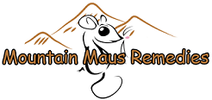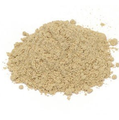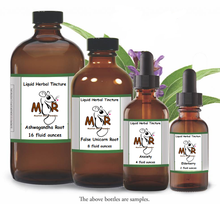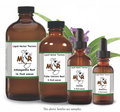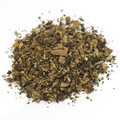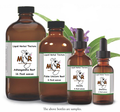 Loading... Please wait...
Loading... Please wait...- Home
- Herbal Tinctures
- Herbal Tinctures - Single Herbs
- Comfrey Root Herbal Tincture
Comfrey Root Herbal Tincture
Product Description
Comfrey Root Herbal Tincture
Also Known As - Symphytum officinale, Bruisewort, Knitback, Knitbone, Boneset, Slippery Root, Bruisewort, Ass Ear, and Blackwort.
Origin - Elbe, Washington
Made with Fresh Comfrey Root and Certified Grain Alcohol. 1;3 Ratio
Overview - Native to Europe and Asia, Comfrey has become naturalized in much of North America. It's in the borage family of plants and has large, soft, fuzzy leaves with beautiful bell shaped cream or purple colored flowers. The plant is a wonderful garden specimen and can take hold of a moist partially shaded area quite effectively. The Roots and Leaves have been used for centuries in herbal medicine and the root of its Latin genus name Symphytum indicates that it has also long been associated with the joining together of things (Symph=join). Preparations have ranged from oils, tinctures, extracts, teas, salves and oils made from the root, and freshly prepared beverages from the leaves. The freshly juiced leaves of this plant make a fantastic and nutritious beverage imparting the reminiscent flavor of chocolate.
- Comfrey has a very high level of allantoin, the cell proliferant and skin strengthener and is a proven, beneficial ingredient for treating skin and hair conditions. Allantoin is a hormone-like substance found in the roots, stems, and leaves of Comfrey and is a major ingredient in better skin and hair care products — available without prescription.
- For a thousand years or more, Comfrey has been known as “knit bone” because of its reputed success in healing broken bones. It was listed in the earliest herbals and pharmacopoeias as a remedy for healing wounds.
- The experiences of millions of people using Comfrey for healing purposes can be distilled into the thousands of recorded testimonies of accelerated healing of wounds, broken bones, burns, bruises, ulcerations, and much more.
- Comfrey as Feed and Food for your live stock - Comfrey is a high-yield, high protein perennial that is superior compost, fodder, food and remedy. It can be dried for hay or crumbles, pelletized, and also used for silage. Versatile fresh leaves are your main crop.
- With increasing animal feed costs and protein prices jumping ever higher, you’ll benefit from having the PERENNIAL SECURITY of Comfrey’s extraordinarily high-yield to use for economical animal food.
Medicinal Uses - In uses for the skin and helping to support the healing of skin and other tissues, comfrey is an all star.* One of the chemicals found in comfrey, allantoin, has been very well researched for it's ability to bring moisture to the skin and assist in the development of healthy skin cells. It is thought to stimulate cell growth and assist in the regulation of the overexpression of inflammatory compounds. The leaves, but more so the root contain large amounts of mucilage as well and this slippery substance has emollient properties for the skin. One of the common names for comfrey was "knitbone" and it has also found its way into various preparations for the assistance in the recovery from stress to bones, tendons and joints. Acts as a blood cleanser. Beneficial for asthma, coughs, catarrh, flu, ulcers, swelling, varicose veins, perineal tears, diaper rash, cradle cap, cramps, tuberculosis, pain, and burns. Also good for the stomach, kidneys, bowels, and lungs.
A decoction of the rootstock makes a good gargle and mouthwash for throat inflammation, hoarseness, and bleeding gums. Drink it to take care of most digestive and stomach problems, for intestinal difficulties, anemia, scrofula, pimples, for excessive menstrual flow, heal broken bones, and to stop spitting blood. Powdered rootstock can also be taken internally for bloody urine (hematuria), leukorrhea, diarrhea, gastro-intestinal ulcers, gout, dysentery and persistent coughs.
Externally, use the powder as a hemostatic agent, and make a poultice for wounds, boils, abscesses, wounds that refuse to heal, leg ulcers, bruises, sores, broken bones, sprains, and insect bites. The hot pulp of the rootstock makes a good external application for bronchitis, pneumonia, coughs, pleurisy, and for the pain, and inflammation of pulled tendons. Add the rootstock to the bath water regularly for a more youthful skin.
Active Constituents - Allantoin, Gum, inulin, mucilage, pyrrolizidine alkaloids, protein, steroidal sapponins, tannin, rosmarinic acid, and zinc.
Parts Used - Roots
Other Uses - Makes an excellent liquid fertilizer for garden and houseplants (allow leaves to decompose in a container of water). Add to the compost pile; use only wilted leaves, however, so they do not take root in the compost pile
Preparations - Paste, ointment, tincture, decoction, poultice and in cosmetics.
Precautions - Not recommended for internal use. Not to be used while pregnant or nursing. Not to be applied to broken or abraided skin.
- Decoction: boil 2 tsp. rootstock in 1 cup water or wine. Take a wineglassful or a teacupful 2-3 times a day.
- Infusion: use 2 tsp. rootstock per 1/2 cup water. Take 1-2 cups per day, warm, a mouthful at a time. Internal application of tea is not advisable.
- Tincture: take 1/2 to 1 tsp. at a time.
- Cold extract tea: use 3 heaping tsp. fresh or dried rootstock with 1 cup water; let stand for 10 hours and strain. Bring the soaked rootstock to a boil in 1/2 cup water, then strain. ix this with the cold extract and drink a mouthful at a time over the course of the day.
- Pulp: stir fresh, chopped rootstock into a little hot water to form a thick mash. Spread on a linen cloth and apply. Renew every 2-4 hours.
Disclaimer - The information presented herein by Maus’ Mountain Remedies is intended for educational purposes only. These statements have not been evaluated by the FDA and are not intended to diagnose, cure, treat or prevent disease. Individual results may vary, and before using any supplements, it is always advisable to consult with your own health care provider.
